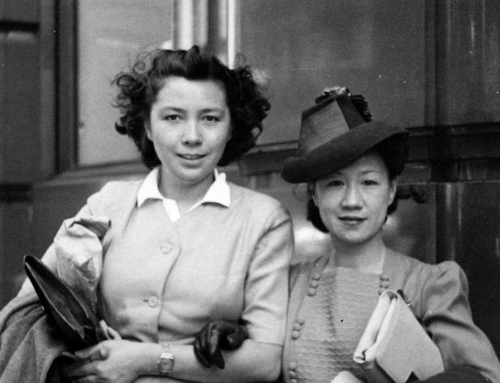 Author John Saeki writes…
Author John Saeki writes…
Hey, Hong Kong friends, do you have a tiger story in your family? Maybe a grandparent saw a pair of shining eyes staring through the dark forest? Maybe your mum or dad saw one stalking a muntjac? Maybe an uncle lost a pig in the night? Maybe you heard a thunderous roar?
If you are a person who has a tiger story in your family, then you will know one of Hong Kong’s best kept secrets.
Tigers came here. They came far more frequently than many would believe.
I am trying to find as many local tiger stories as I can. I want to talk to you, if you have a family member, or an old school friend, or anybody you know, who has a Hong Kong tiger yarn.
I would like to put these stories together into a book called The Last Tigers of Hong Kong. Please get in touch if you want to tell me something about the Lord of the Hundred Beasts prowling this territory!
Most people who have an interest in Hong Kong’s wildlife have probably heard the two famous stories. The 1915 Sheung Shui Tiger was responsible for the death of two policemen, Rattan Singh and Ernest Goucher, before it was shot and displayed at City Hall. The Stanley Tiger of 1942 terrorised prisoners and guards alike outside the Japanese internment camp until it was killed by an Indian guard. You can see the head of the Sheung Shui tiger at the police museum at Wanchai Gap, and you can see the skin of the Stanley tiger inside the Tin Hau temple beside the Stanley Plaza shopping complex.
If you were like me you probably lazily assumed, without thinking too deeply about the issue, that these were the remnants of an ancient local group, and that they were probably the last tigers of Hong Kong.
I was first jolted out of this thought when I came across an article in an excellent, but now sadly demised, online magazine produced by the biology department at Hong Kong University. Author Jonathan Downes points out in the article that the South China tiger was a regular visitor to Hong Kong, and he cites the city’s most famous biologist, G.A.C. Herklots, who wrote in 1951 that tigers on average visited the territory once a year.
I loved the idea so much that I used it in my novel set in the 1950s, which naturally had to be called The Tiger Hunters of Tai O. The tiger that appears in that book was an imagined beast, stalking amongst made-up characters, living in a dreamed-up story. I was happy with that, but for a long time it niggled me that I ought to find out more about the true history of tigers in Hong Kong.
So at the end of last year I went to the library and started looking in the old newspaper archives, and I was amazed. Of course there were lots of tiger stories — Herklots had told us that already. But I didn’t realise that the local press were documenting them regularly for half a century and that there is a trove of Hong Kong tiger lore, right there on record.
The 1911 Stanley Tiger reminded everyone that the big cat was a good swimmer and that the Hong Kong harbour was no barrier. The beast first appeared in Stanley and then swam across to Lamma Island where it ate a few cows and then returned to Stanley to scare a few more people before taking another trip to an island. On Lantau the big cat killed 20 cows in Mui Wo, Shek Pik, Tung Chung and Tai O, leaving a familiar calling card of cattle with back legs torn off.
There were Peak tigers in 1914 and 1916 that scared many posh people for months at a time. Hunting parties went out, angry letters were sent to the press, but like most of the tigers that were spotted prowling the territory, they successfully eluded all attempts to end their wanderings.
In 1926 a policeman spotted locals in the New Territories taking a caged tiger towards the railway station. It had been caught in a deer trap. The Hong Kong Telegraph noted that the public would not have known that another tiger had been caught if the policeman had not come across the scene by chance. The tiger was exhibited in Lee Gardens for a time, and then sent to Yau Ma Tei police station to be fitted with a more suitable cage, where it died from its deer-trap wounds.
A tiger cub was captured in the New Territories in 1928 and for a time lived at the house of Mr H. Green, the superintendent of the Botanical and Forestry Department. Somehow the unlucky feline ended up as a mascot on the British warship HMS Cumberland for a short time before dying on board.
One tiger first appeared in 1935 at Ma On Shan, then Kowloon, Sha Tin, Tai Po and Lai Chi Kok. It later appeared in Kowloon Tong, and was seen soon after in Sai Kung and several other places. It could of course have been more than one tiger, but the reports came clustered over weeks, and at the time people believed it was a single restless prowler.
In 1937, the blood-stained remains of a woman with nearly her whole body missing were found on the north face of Tai Mo Shan, the Hong Kong Daily Press reported on the 23rd of January.
In 1947 a water buffalo was mauled to death — a water buffalo! Then three tigers appeared where “only the bones of the pig remained on the hillside.”
Another attack on a human was reported in 1949 when a hunter had his legs and thighs badly mauled, and his teeth knocked out. He was saved by his companions who hit the tiger on its head with their rifle butts.
In 1956 a woman reported a tiger at Mau Kwei Kui (fierce ghost bridge) at Tai Po. Which could be an apt place to stop because it is said that Tai Po — “big step” — got its name from its reputation as tiger country in centuries past. If you had to pass through the district you were advised to move swiftly, taking big steps, to lessen your chance of being caught and eaten.
These are just selected highlights from more than 50 separate tiger appearances that I have counted in newspaper records between 1900 and 1960. Some of the appearances were in single reports, while others generated dozens of stories stretching over months.
The last credible tiger visits could have been in 1965 when police organised hunts at Shing Mun after weeks of footprints, roars and sightings.
And that is why I think it is possible that someone reading this might have a tiger story of their own, or might know someone who has one. If that is you, don’t hesitate to get in touch! Please write to me at john.saeki@gmail.com.






Leave a reply